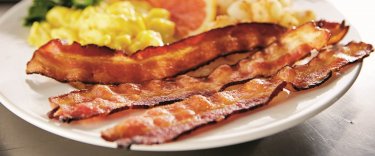Fully automated restaurants may still be in our future, but until then, foodservice providers will be looking for practical products and innovations that can help their human staff save time, improve safety and decrease waste.
For quick-service restaurants, lunch time is always a challenge. According to one operator, “no matter what you do, you’re gonna get slammed at noon. Even if you could hire 10 people, you just can’t fit them in the restaurant.” Little wonder that owners and operators are looking to machines to help get customer’s meals out faster. Another advantage: robotic food assembly is more accurate, which supports consistency and reduces waste.
“As delivery and takeout become a bigger part of the lunch sales mix — if you’re just getting this brought to you by a delivery service, you never see the process — it really doesn’t matter (if a salad was made by robots), as long as it’s fresh and tastes fine,” said Jonah Bliss, publisher of the online newsletter, OttOmate, a guide to food robotics and automation.
“The pepperoni ribbons came from a simple idea: What if pepperoni could be handled the same way as shredded mozzarella cheese? You just scoop a handful and spread it across the pie,” Flores said. While saving a few minutes of labor on each pizza might not seem like a major innovation, when a university is preparing food for tens of thousands of hungry students, such advances can make a big difference.
What’s Ahead
Mobile robots delivering meals have elicited excitement from the recipients of their savory cargo as well as annoyance from pedestrians who’d rather not share the sidewalk. Driverless cars may soon be a key delivery vehicle as well. Some of these innovations evoke the frictionless world of “The Jetsons” — others look good on paper but don’t work as well in real life. We haven’t seen much drone delivery yet, but as with the innovations in that frictionless Jetson world, it might be just around the corner.

